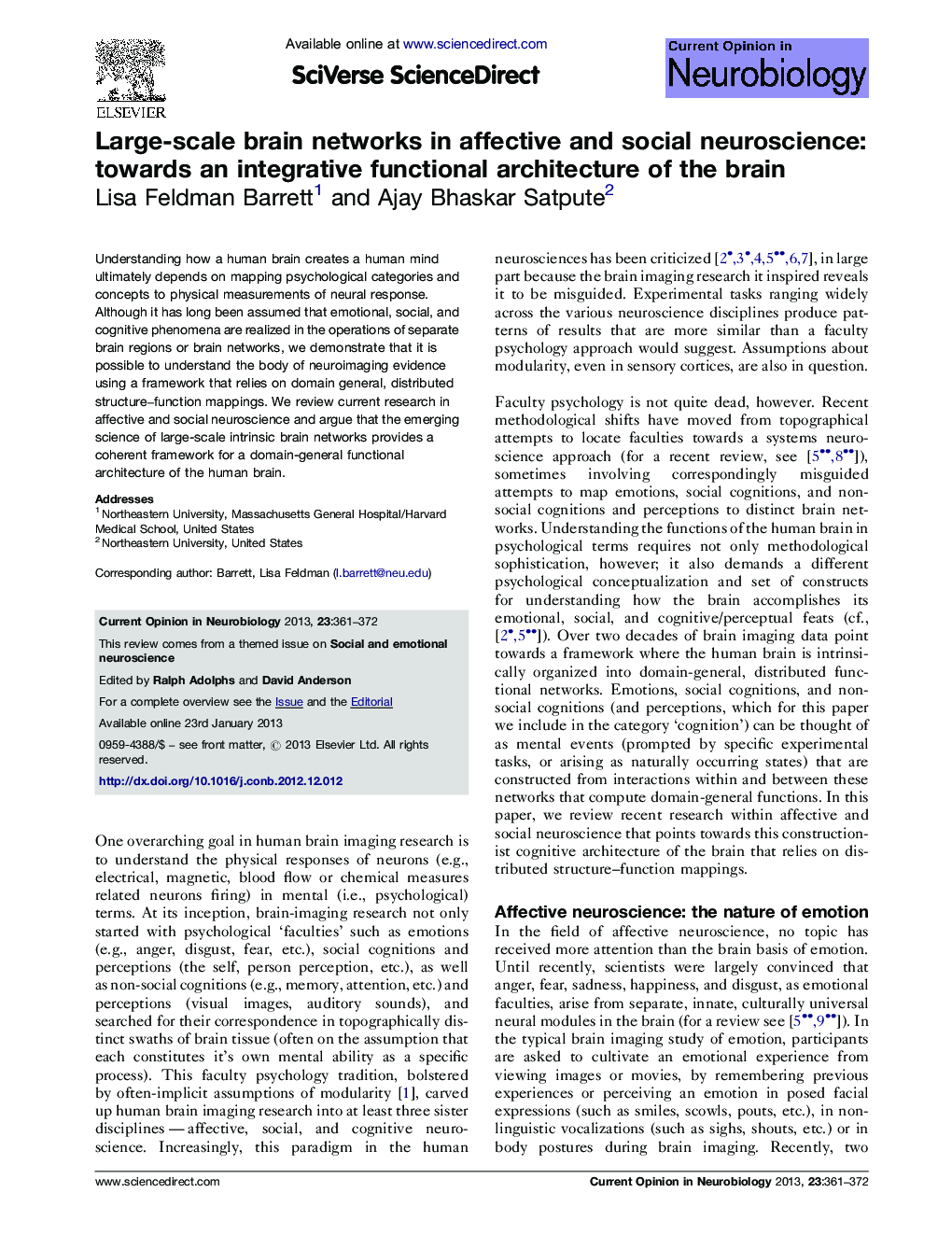| Article ID | Journal | Published Year | Pages | File Type |
|---|---|---|---|---|
| 6267173 | Current Opinion in Neurobiology | 2013 | 12 Pages |
Understanding how a human brain creates a human mind ultimately depends on mapping psychological categories and concepts to physical measurements of neural response. Although it has long been assumed that emotional, social, and cognitive phenomena are realized in the operations of separate brain regions or brain networks, we demonstrate that it is possible to understand the body of neuroimaging evidence using a framework that relies on domain general, distributed structure-function mappings. We review current research in affective and social neuroscience and argue that the emerging science of large-scale intrinsic brain networks provides a coherent framework for a domain-general functional architecture of the human brain.
⺠Phenomena in affective, social, and cognitive neuroscience cannot be specifically localized to distinct brain regions or brain networks. ⺠Affective, social, and cognitive phenomena arise from the interaction of domain-general, distributed functional networks. ⺠We review the functional roles of “salience”, “mentalizing”, and “mirroring” networks. ⺠This “constructionist” functional architecture provides a valid level of description for brain imaging data.
